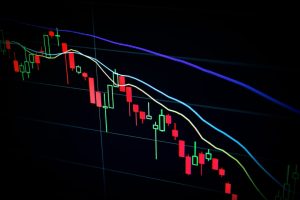Mastering Technical Analysis: Key Strategies for Trading Forex
Technical analysis is a fundamental tool for traders in the forex market. It involves studying past price and volume data to identify patterns, trends, and potential future price movements. By understanding and implementing technical analysis strategies, traders can make informed decisions and increase their chances of success in the forex market.
In this article, we will discuss some key strategies for mastering technical analysis in forex trading.
1. Trend Analysis:
One of the most basic yet powerful concepts in technical analysis is trend analysis. By identifying the direction of the market trend, traders can align their trades with the prevailing market sentiment. There are three types of trends: uptrend, downtrend, and sideways trend. Traders can use various tools like trendlines, moving averages, and trend indicators like the MACD (Moving Average Convergence Divergence) to identify and confirm a trend.
2. Support and Resistance Levels:
Support and resistance levels are significant price levels where the buying and selling pressure is expected to be strong. Support levels act as a floor, preventing prices from falling further, while resistance levels act as a ceiling, preventing prices from rising further. Traders can use these levels to identify potential entry and exit points for their trades. Additionally, breakouts above resistance or below support levels can signal potential trend reversals or continuations.
3. Candlestick Patterns:
Candlestick patterns are graphical representations of price movements over a specific period. They provide valuable information about market sentiment and potential price reversals. Some commonly used candlestick patterns include doji, hammer, shooting star, engulfing, and hanging man. Traders can use these patterns to confirm their analysis and make informed trading decisions.
4. Indicators and Oscillators:
Indicators and oscillators are mathematical calculations based on price and volume data. They help traders identify potential entry and exit points, as well as overbought and oversold conditions. Some popular indicators include the Relative Strength Index (RSI), Moving Average Convergence Divergence (MACD), and Stochastic Oscillator. It’s important to note that no single indicator can guarantee success, and it’s crucial to use them in conjunction with other technical analysis tools.
5. Fibonacci Retracement:
Fibonacci retracement is a popular tool based on the Fibonacci sequence, a mathematical sequence where each number is the sum of the two preceding numbers (0, 1, 1, 2, 3, 5, 8, 13, 21, etc.). Fibonacci retracement levels are horizontal lines drawn on a chart to indicate potential support and resistance levels based on the Fibonacci ratios (23.6%, 38.2%, 50%, 61.8%, and 78.6%). Traders use these levels to identify potential reversal points and adjust their trading strategies accordingly.
6. Multiple Time Frame Analysis:
Multiple time frame analysis involves analyzing price charts of different timeframes to gain a broader perspective on the market. Traders can use longer timeframes like daily or weekly charts to identify the overall trend, while shorter timeframes like hourly or 15-minute charts can be used for precise entry and exit points. By combining different timeframes, traders can reduce the risk of false signals and make more accurate predictions.
7. Risk Management:
While technical analysis provides valuable insights into market trends and potential price movements, it’s essential to implement proper risk management strategies. This includes setting stop-loss orders to limit potential losses, determining position sizes based on risk appetite, and regularly reviewing and adjusting trading strategies.
In conclusion, mastering technical analysis is crucial for successful forex trading. Traders should familiarize themselves with various technical analysis tools and strategies, and practice using them in real-market conditions. It’s important to remember that technical analysis is not infallible and should be used in conjunction with fundamental analysis and risk management techniques. With dedication, practice, and continuous learning, traders can enhance their trading skills and increase their chances of success in the forex market.





